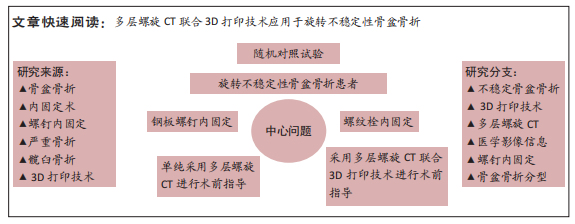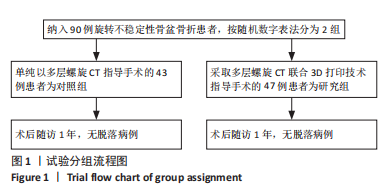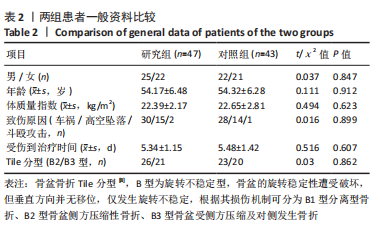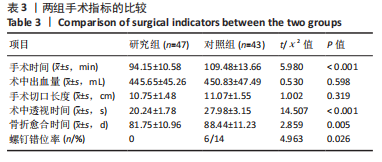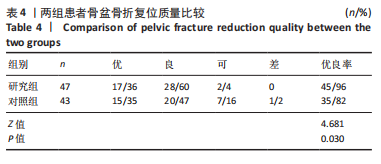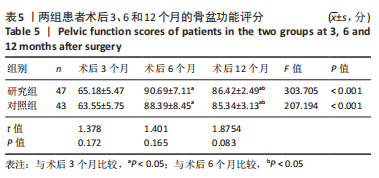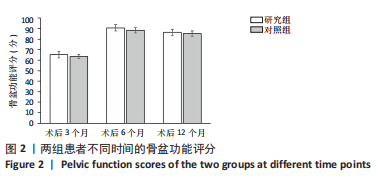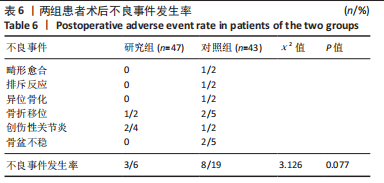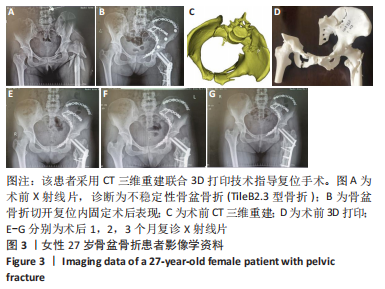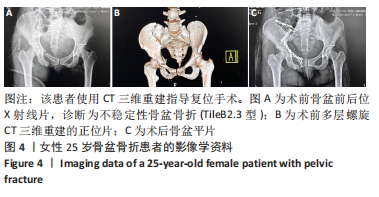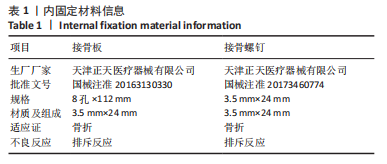[1] LIN SS, ZHOU SG, HE LS, et al. The effect of preperitoneal pelvic packing for hemodynamically unstable patients with pelvic fractures. Chin J Traumatol. 2021;24(2):100-103.
[2] CAVALCANTI KUßMAUL A, GREINER A, KAMMERLANDER C, et al. Biomechanical comparison of minimally invasive treatment options for Type C unstable fractures of the pelvic ring. Orthop Traumatol Surg Res. 2020;106(1):127-133.
[3] AL-DULIMI Z, WALLIS M, TAN DK, et al. 3D printing technology as innovative solutions for biomedical applications. Drug Discov Today. 2021;26(2):360-383.
[4] PARK JW, KANG HG, KIM JH, et al. The application of 3D-printing technology in pelvic bone tumor surgery. J Orthop Sci. 2021;26(2): 276-283.
[5] 中华医学会骨科学分会创伤骨科学组,中华医学会骨科学分会外固定与肢体重建学组,中华医学会创伤学分会,等.中国骨盆骨折微创手术治疗指南(2021)[J].中华创伤骨科杂志,2021,23(1):4-14.
[6] TORNETTA P 3RD, MATTA JM. Outcome of operatively treated unstable posterior pelvic ring disruptions. Clin Orthop Relat Res. 1996;(329): 186-193.
[7] MAJEED SA. Grading the outcome of pelvic fractures. J Bone Joint Surg Br. 1989;71(2): 304-306.
[8] 沈红雷,冯德宏,许宏俊,等.CT三维重建技术判断骨盆骨折Tile分型与二维CT及X线的对比研究[J].河北医学,2019,25(6): 982-986.
[9] SKITCH S, ENGELS PT. Acute management of the traumatically injured pelvis. Emerg Med Clin North Am. 2018;36(1):161-179.
[10] PAVLIČEV M, ROMERO R, MITTEROECKER P. Evolution of the human pelvis and obstructed labor: new explanations of an old obstetrical dilemma. Am J Obstet Gynecol. 2020;222(1):3-16.
[11] DUTTON RA. Stress fractures of the hip and pelvis. Clin Sports Med. 2021;40(2):363-374.
[12] LUK L, TAFFEL MT. Cross-sectional anatomy of the male pelvis. Abdom Radiol (NY). 2020;45(7):1951-1960.
[13] SUAREZ-WEISS KE, HEROLD A, GERVAIS D, et al. Hybrid imaging of the abdomen and pelvis. Radiologe. 2020;60(Suppl 1):80-89.
[14] BURNER JM, DYER RB. The champagne glass pelvis. Abdom Radiol (NY). 2018;43(11):3190-3191.
[15] DRYLEWICZ MR, LUBNER MG, PICKHARDT PJ, et al. Fatty masses of the abdomen and pelvis and their complications. Abdom Radiol (NY). 2019;44(4):1535-1553.
[16] HAMMOND KE, KNEER L, CICINELLI P. Rehabilitation of soft Tissue injuries of the hip and pelvis. Clin Sports Med. 2021;40(2):409-428.
[17] CHAN BY, LEE KS. Ultrasound intervention of the lower extremity/pelvis. Radiol Clin North Am. 2018;56(6):1035-1046.
[18] ZULFIQAR M, LIN M, RATKOWSKI K, et al. Imaging features of neurofibromatosis type 1 in the abdomen and pelvis. AJR Am J Roentgenol. 2021;216(1):241-251.
[19] ZULFIQAR M, SHETTY A, TSAI R, et al Diagnostic approach to benign and malignant calcifications in the abdomen and pelvis. Radiographics. 2020;40(3):731-753.
[20] LEA WB, TUTTON SM, ALSAIKHAN N, et al. Pelvis weight-bearing ability after minimally invasive stabilizations for periacetabular lesion. J Orthop Res. 2021;39(10):2124-2129.
[21] SUKERKAR PA, FAST AM, RILEY G. Extreme sports injuries to the pelvis and lower extremity. Radiol Clin North Am. 2018;56(6):1013-1033.
[22] ZHENG Y, ELSAYES KM, WARANCH C, et al. IgG4-related disease in the abdomen and pelvis: atypical findings, pitfalls, and mimics. Abdom Radiol (NY). 2020;45(8):2485-2499.
[23] Alyaev YG, Sirota ES, Bezrukov EA, et al. Non-biological 3D printed simulator for training in percutaneous nephro-lithotripsy. Urologiia. 2018;(1):10-14.
[24] 苗鹏.多层螺旋CT三维重建辅助3D打印技术对复杂髋臼骨折手术的分析[J].中国CT和MRI杂志,2021,19(12):163-166.
[25] WANG J, WANG X, WANG B, et al. Comparison of the feasibility of 3D printing technology in the treatment of pelvic fractures: a systematic review and meta-analysis of randomized controlled trials and prospective comparative studies. Eur J Trauma Emerg Surg. 2021; 47(6):1699-1712.
[26] LUGO-FAGUNDO C, GHODASARA N, FISHMAN EK, et al. CT evaluation of self-induced and retained foreign bodies in the abdomen and pelvis. Clin Imaging. 2021;80:26-35.
[27] BRANCH KRH, STROTE J, GUNN M, et al. Early head-to-pelvis computed tomography in out-of-hospital circulatory arrest without obvious etiology. Acad Emerg Med. 2021;28(4):394-403.
[28] HAIMS AH, WANG A, YOO BJ, et al. Negative predictive value of CT for occult fractures of the hip and pelvis with imaging follow-up. Emerg Radiol. 2021;28(2):259-264.
[29] ALEXANDER LF, HANNA TN, LEGOUT JD, et al. Multidetector CT findings in the abdomen and pelvis after damage control surgery for acute traumatic injuries. Radiographics. 2019;39(4):1183-1202.
[30] TORRADO-CARVAJAL A, VERA-OLMOS J, IZQUIERDO-GARCIA D, et al. Dixon-VIBE deep learning (DIVIDE) pseudo-CT synthesis for pelvis PET/MR attenuation correction. J Nucl Med. 2019;60(3):429-435.
[31] ROTHMAN RK, WEINREB J, ZUCCONI W, et al. Diagnostic value of CT of chest, abdomen, and pelvis in patients with solitary and multiple brain lesions. AJR Am J Roentgenol. 2020;214(3):636-640. |
